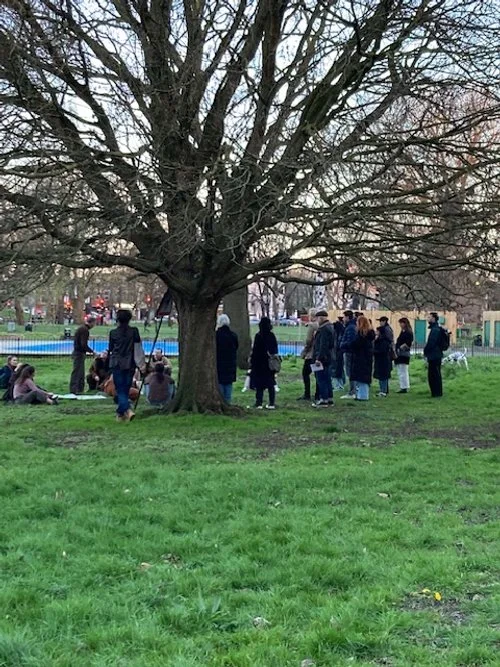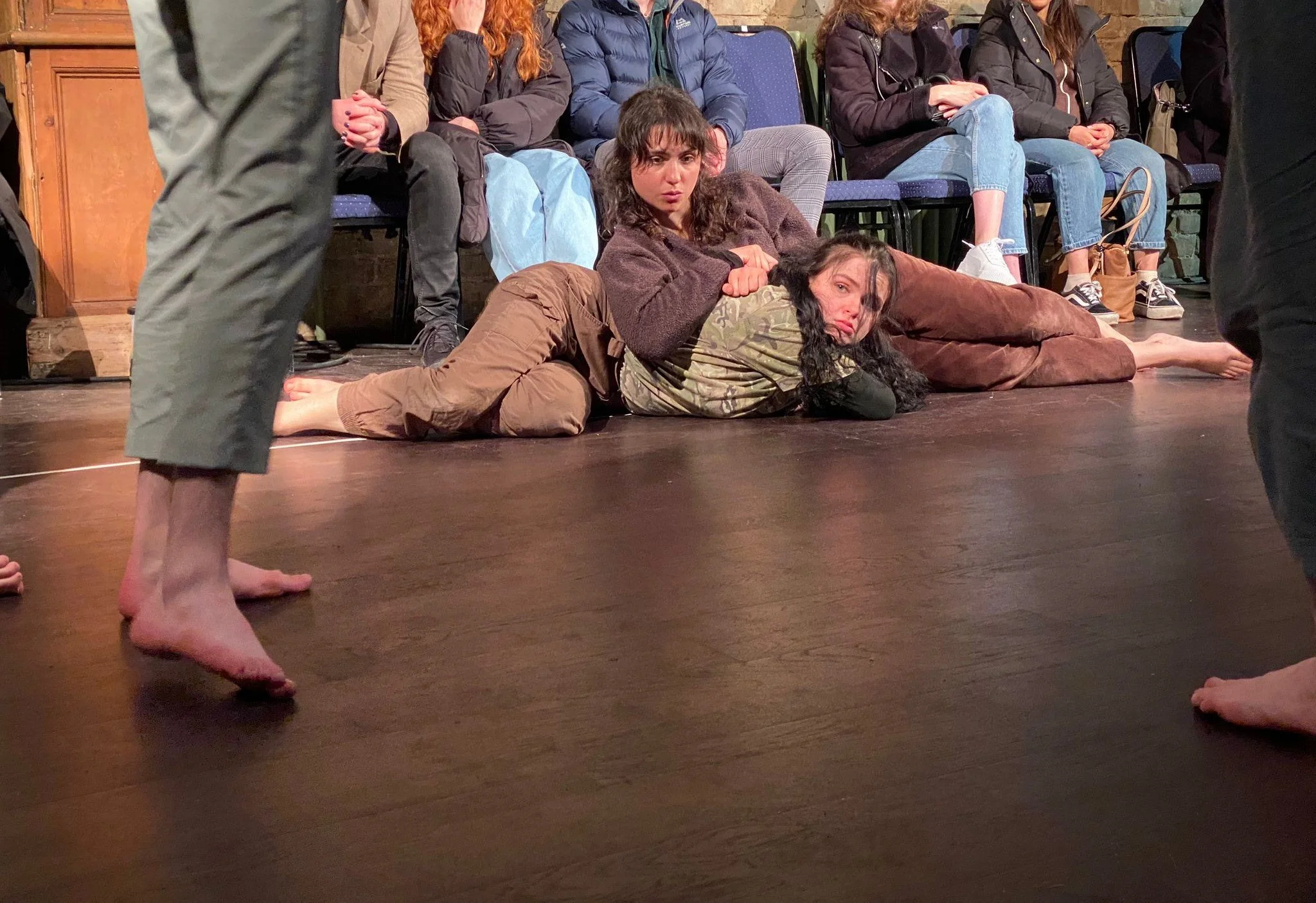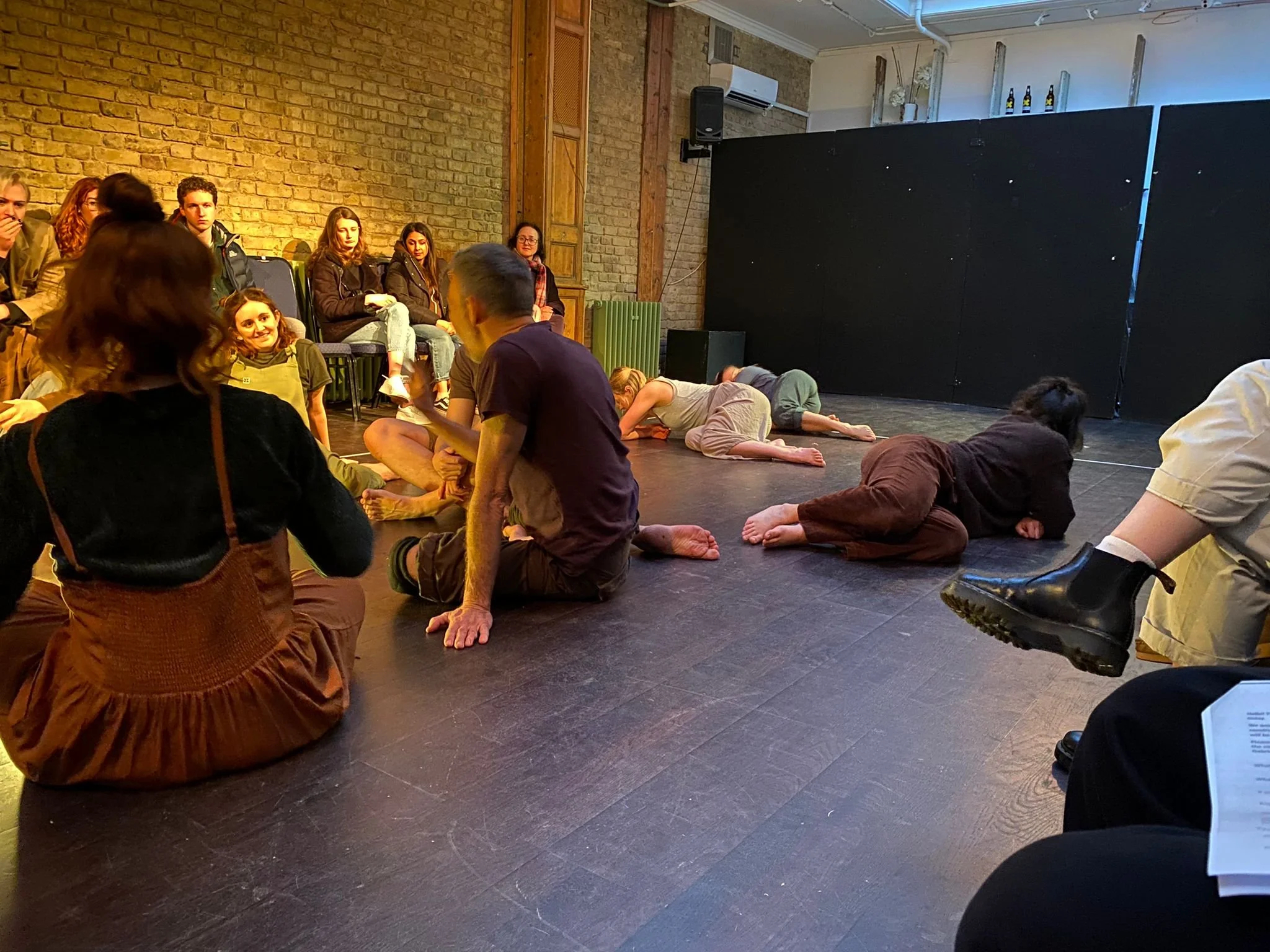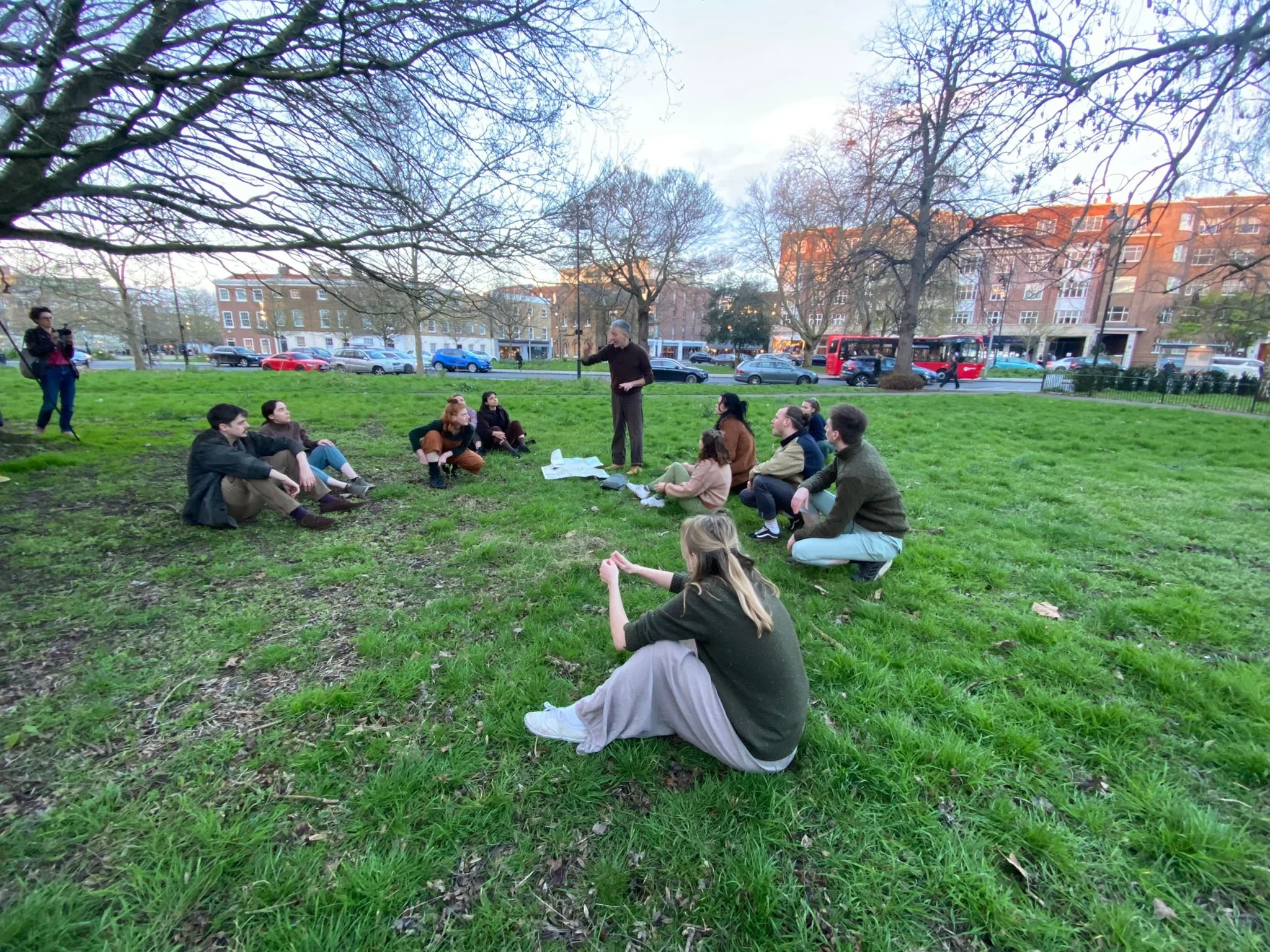Deer Life at Easter time.
Over two consecutive Saturdays in the run up to Easter, a group of 12 actors performed two versions of Deer Life in two different London venues. What was evident from the early workings in deer, was that any piece that grew from it would need to have a large company of actors. Getting a piece up on its feet, even in an early form such as this with a dozen actors is no mean feat! A motif of Deer Life is community. The herd work together. Though one often observes deer grazing or resting or chewing the cud with no obvious interaction with others, there is a heightened sensitivity of the whole group, one with another, which keeps them safe. The cohesive nature of the group of actors, all of whom share in the common language of Transformation, cannot be underestimated in creating this piece.
The first performance was in the lofty studio space of the Coronet Theatre, Notting Hill. Deer Life sat in a program of 6 short works in progress. Staging it in the round served our piece well. With audience all around us it really felt that the herd were contained by a natural border of humans keeping them from straying off into other territory- both a border of protection but also confinement.
The motif of territory arose in our initial research period in deer last spring during our residency at 101 Outdoor Arts, Greenham. You can hear a bit more about this in the We As Nature podcast I made last year, (at 20mins and 7 sec). What has developed through all our research- active, observational and from the literature we are drawing our stories from, is the necessity for these animals to be able to follow tracts of land that they know. The place where they were born, the place that has the shoots and grasses that best nourish them at different moments in the year, the places where they can mark out an area as breeding ground etc… and when territory is taken from them, they will seek to return to it, so often at their peril.
It was evident that the terrible violence that smashes in to end a deer’s life- by car, by gun and by other human weapons, would need to find its place within our very human story. And it has, around a cosy campfire setting.
What worked so well at the Coronet was the dark that could be achieved in order for torchlight / car headlight to scan the stage picking out family groupings or lone individuals. The final scene,(though the space could hardly contain the number of actors in their joyous spring and open meadow freedom ‘dance’), had the magnificent sky-high ceiling vaulting over us- actors and audience alike. We are, none of us, so very different after all.
A week later we performed a longer version of the piece at the Omnibus Theatre. This time Deer Life formed part of the Over it! Festival, celebrating women and non-binary makers of theatre, older than 35.
Here, the need for space was answered by us creating specific additional some scenes for the outdoors. Promenade style, on Clapham Common, we played at dusk, that twilight moment when you might just cross paths with a deer. The audience were safely led across the road by a company member holding alSure, please provide the text you would like me to optimize for search engines.oft a deer crossing sign. Our first scene played out in the shadow of Holy Trinity church on the Common. This is a church famous for being the headquarters of the Clapham Sect of the early 19th century, with William Wilberforce at the head of the anti-slavery movement. For those who knew the site it added a layer of “freedom from overwhelming dangers besetting our fragile species.” (audience member)
The straggly bunch of humans out there on the Common appeared vulnerable and without a place- with nowhere they could safely stay for long. One spectator had this to say:
“I arrived across the Common to the strange spectacle of a herd of deer being addressed by a wise man. As the herd sat on the grass, I was very conscious of the buses and traffic in the distance, the world I had just left with all its pollution and noise.…..when one of the herd, a kind of would-be leader, told a story and had most, but not all, of the herd spell-bound for a moment, this drew me ever more into the dynamics of the group and I wanted their safety. “
To have been able to experiment with this work both in an indoor and an outdoor setting has given us the opportunity to discover new material. It is clear that both settings bring elements that help create the world of the piece, giving it its universal frame- of the them and us,( not so very different), and of the here and everywhere.
Footage thanks to Sharan Atwal




